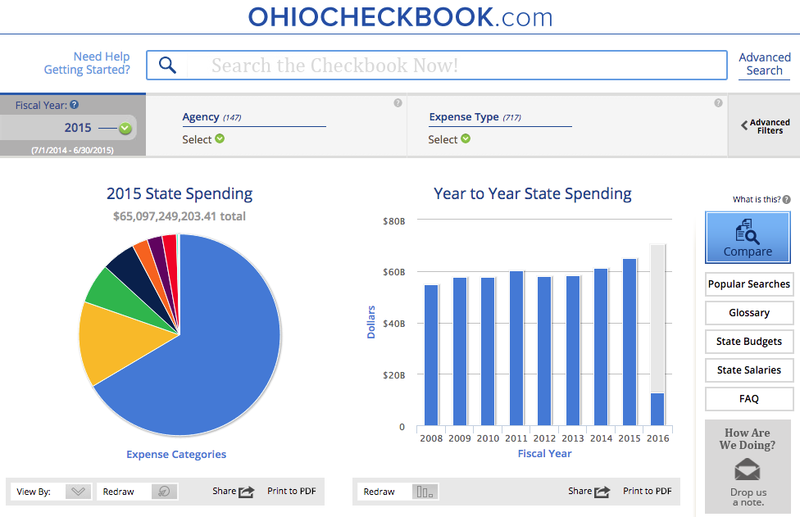Ohio’s online checkbook goes local

In June, we wrote about Ohio’s online checkbook, a tool that gives citizens easy access to information about where their tax dollars are being spent. Following its release, Ohio State Treasurer Josh Mandel invited 3,962 local governments to post their financial data through the checkbook in an effort to make local government financial data available in open formats.
Last month, the state made good on this call-to-action when it expanded its checkbook by posting the first round of local government expenditures online. This is the nation’s first statewide effort to expand transparency initiatives to local government, including Ohio’s counties, cities, schools, libraries and other entities. Residents now have easy access to nearly $15 billion worth of spending in 114 communities at the local level.
The initiative, which was supported by the Ohio Treasurer’s Office, gives residents a means for holding their community’s public officials accountable for spending tax dollars wisely. Previously, data seekers could spend countless hours combing through websites to find the information they wanted or waiting for records requests to be filled. They can now easily search, download and explore expenditures in user-friendly formats. Using interactive charts and graphs they can also quickly compare spending in their community to other municipalities.
Local governments might also find that easier access to this information can help them see how they measure up to other communities. They can now use data from around the state to make better departmental decisions that reduce waste and improve services.
An added bonus is that the initiative comes at no cost to local governments: The state’s existing online platform is already available to house the new data. While local entities are not mandated to post their data online, the fact that they can do so for free provides an incentive.
This year, Ohio jumped from nearly last place to first in U.S. PIRG’s spending transparency rankings. With this unprecedented effort, the state continues to set an example for open financial data at the local level.

